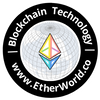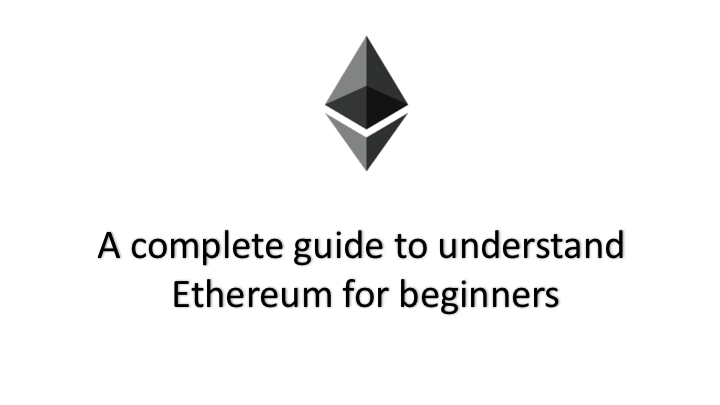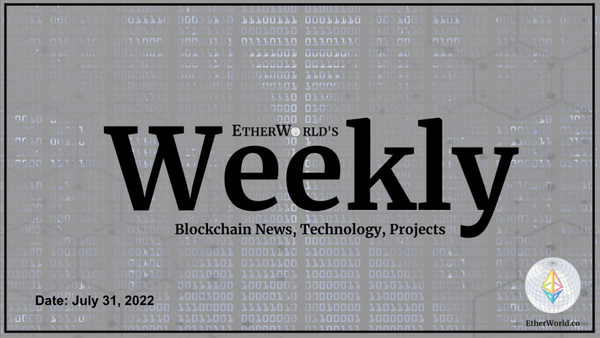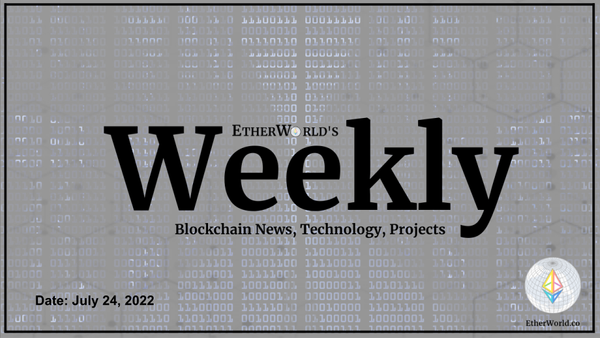What is Ethereum?
Ethereum is a revolution in Blockchain Technology. It may sound a bit complicated for non-technical person, but it is designed and being upgraded to make our life much simpler.
Ethereum is an open source blockchain platform with built in programming language that allows developers to write, test and execute their decentralized application (contract). Data stored on Ethereum blockchain can be viewed by anyone but one having the private key can access it, and is the owner. Any transaction performed is anonymous, parties involved are always unknown.
In very simple words, Ethereum is an application of blockchain technology similar to Bitcoin but with wider scope of application.
To grasp Ethereum, we need to comprehend its features. This post should help understand overall Ethereum ecosystem in a little less technical way.
Ethereum – The world computer
Initial idea of Ethereum was conceived as ‘World Computer’ that would decentralize the existing centralized client-server model. In the existing model, data sent across the network to the client is controlled by central server. Server is powerful and data can be controlled by the owner of the server. Other than the control issue, this model is expensive, and suffers downtime too.

Image: Client Server model from Wikipedia
Blockchain technology, wipes out central server and make every client (called "nodes") across the globe as the server with each one having full control of data with consensus and hence is censorship proof (forming a ‘World Computer’).
Ethereum - A Distributed Ledger
Ethereum is based on distributed database concept, data is stored in multiple physical locations, among multiple nodes following the Ethereum blockchain. Distributed database allows users to replicate and share files across a network leveraging peer-to-peer protocols. Consensus mechanisms is used to ensure fault-tolerant communications, and provide concurrency control through locking and/or time-stamping mechanisms.
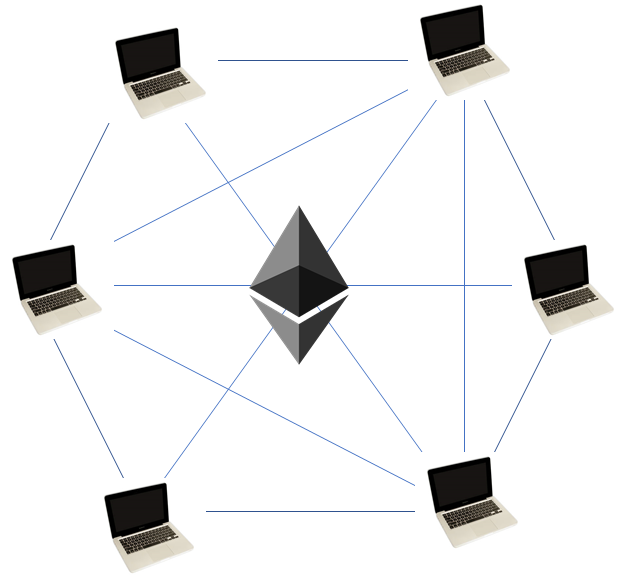
Image : Distributed Ledger model
Ethereum is a distributed ledger (DL); a distributed database that leverage cryptography to provide a decentralized multi-version concurrency control mechanism and to maintain consensus about the existence and status of shared facts in trustless environments. It stores the data on the concept of Merkle Tree and provides the ability to secure transactions in competing environments, without trusted third parties.
Bitcoin is the first example of distributed ledger technology (DLT), yet Ethereum is gaining more acceptance. This is because Bitcoin is designed for one purpose that is peer-to-peer payments (cryptocurrency), whereas Ethereum is designed to execute programmable transactions (smart contracts). It has decentralized application (DApps) that makes it powerful and developer friendly. DApp is application without any middleman, where users can directly interact with social system, financial system etc. in a peer to peer way. Both uses chained blocks of data (hence the ‘blockchain) to avoid double spending and a proof of work (PoW) consensus among other mechanisms, though Ethereum is planning to switch on Proof of stake (PoS) and implement privacy mechanisms zk-SNARKS. Ethereum is censorship resistant, its key features are: Practical Byzantine Fault Tolerant (PBFT), anonymity, auditability (public), immutability, accountability (time-stamping) and non-repudiation (signature) at transaction level.
Ethereum – The Linux of Blockchain
Let’s try to understand the kinship between Ethereum and Linux. Linux kernel is an open source operating system kernel which allows other OS to run on top of it. Linux is the leading operating system on servers and other big iron systems such as mainframe computers, and is used on 99.6% of the TOP500 supercomputers. It is used by around 2.3% of desktop computers. Popular operating systems such as Android, Chrome OS and other general-purpose operating systems are also based on Linux. Ethereum resembles Linux in blockchain space.

Image: Ethereum ecosystem
Ethereum stimulates much of the innovation within the blockchain space. Ethereum is a universal programmable blockchain. The Ethereum ecosystem provides an open source platform for developers to create, test decentralized applications (DApps) and to run on blockchain, using smart contracts. Amount of DApps getting built on the network with every passing day, points towards the ease and popularity of Ethereum in developer’s community.
Ether – The Digital Asset
One of the reasons why Ethereum gets popular in the recent days is the increasing valuation of its digital currency 'Ether' (ETH). Ether is a cryptocurrency that is transferred between parties instantly, via online communication acceptable on the Ethereum blockchain.
Compared to alternative mode of payments, Ether has a number of advantages. Transaction is global, cheaper, almost instantaneous, permission less and anonymous. One fact to be remembered is that transaction done is unidirectional and irreversible.
How can I get Ether?
Ether can be obtained from one or all of the below methods:
-
Purchase from an exchange – This is probably the most popular method of obtaining Ether among investors with any level of technical understanding. It can be directly purchased with Fiat currency from exchanges like Coinbase, Kraken and also can be obtained with another cryptocurrency again with help of exchange like Poloniex. Purchase from an exchange is widely accepted method for possessing Ether. A buyer can select an exchange that is supported in his location.
-
Mining Ether – Since Etherum uses Proof of Work (PoW) concept, an expensive computation method that involves scanning for a value. Finding such a rare number is hard (based on the cryptographic features of the hash function used in this process), so the miners get rewarded with a set amount of Ether (ETH) to perform this activity. Since, this entire process involves expensive hardware and consumes huge electricity, Ethereum is planning to switch to different scheme of mining called Proof of Stake (PoS).
Where can I save Ether?
ETH is stored in a cryptocurrency wallet or digital wallet which is very similar to online banking. When a transaction is made an electronic signature is added. After a few minutes, the transaction is verified by a miner and is stored permanently and anonymously in a network. There are many ETH wallets available in market today. Some popular wallets are MyEtherWallet, Mist Wallet, JAXX etc. Ledger Nano S is another popular hardware wallet for ETH.
Where can we use Ethereum?
-
DApps - With building various mainstream applications on Ethereum Blockchain, we can use it. almost everywhere, where decentralization is needed
-
Enterprise sectors - Can be used in financial transactions as well as disrupting various existing enterprise sectors such as Insurance, Real Estate, Aviation, Supply chain management etc .
Roadmap of Ethereum.
Ethereum has been deployed in different phases. Currently the Ethereum project is in the 2nd phase, called “Homestead”. The 4 planned phases for the growth of the Ethereum network are

Image: Ethereum planned phases for growth
-
January 2014 – Announcement of Ethereum at North American Bitcoin Conference. Crowdsale - $18 M in Bitcoin
-
July 2015 - Frontier phase: Ethereum Blockchain goes live
-
March 2016 – Homestead phase: Many protocol improvements
-
We are looking forward for next phase Metropolis soon.
Ethereum is still in growing phase. As on date it has made a remarkable position in blockchain technology. We hope to see many more mainstream adaptability of Ethereum in near future.
For more updates, technical blogs and general discussion on Blockchain Technology and Ethereum, please join us at our Website, reddit, Facebook, Medium, Slack and follow us at Twitter. Please feel free to share this post, email us with your suggestions.

